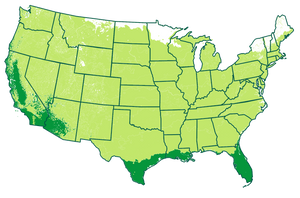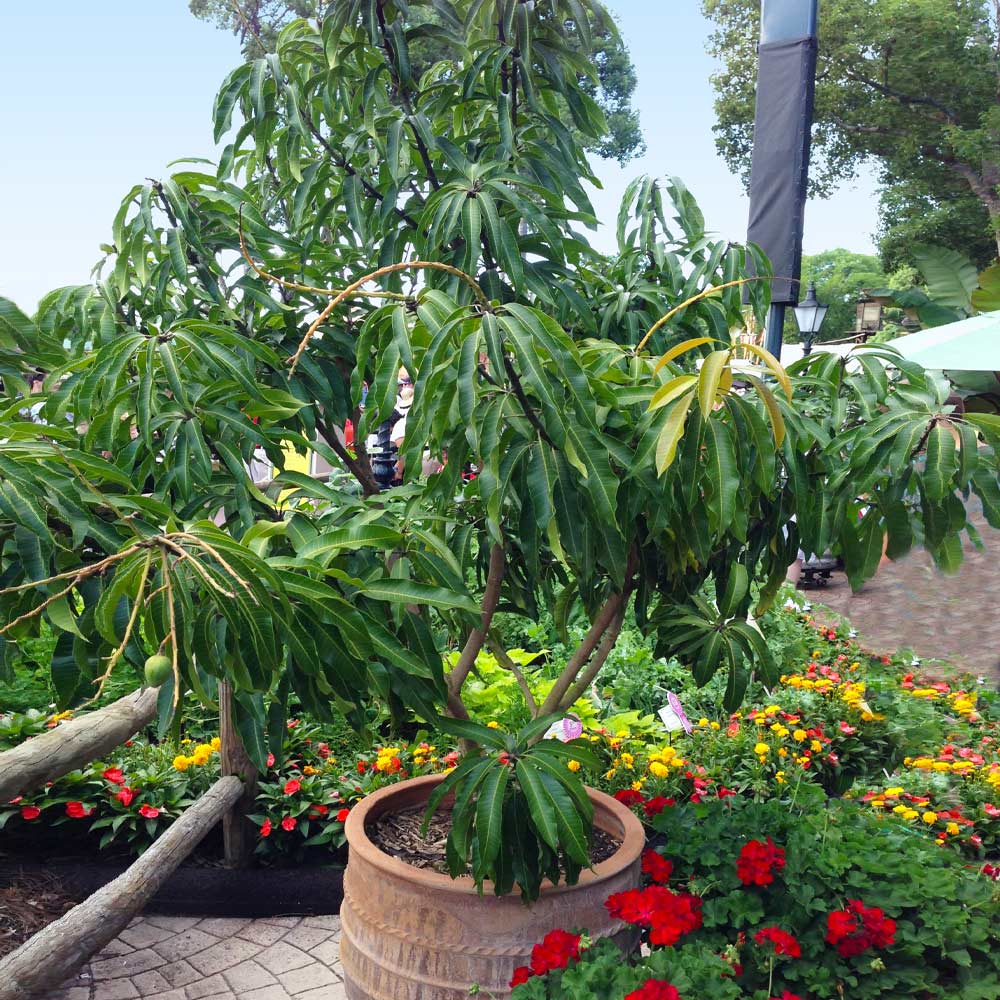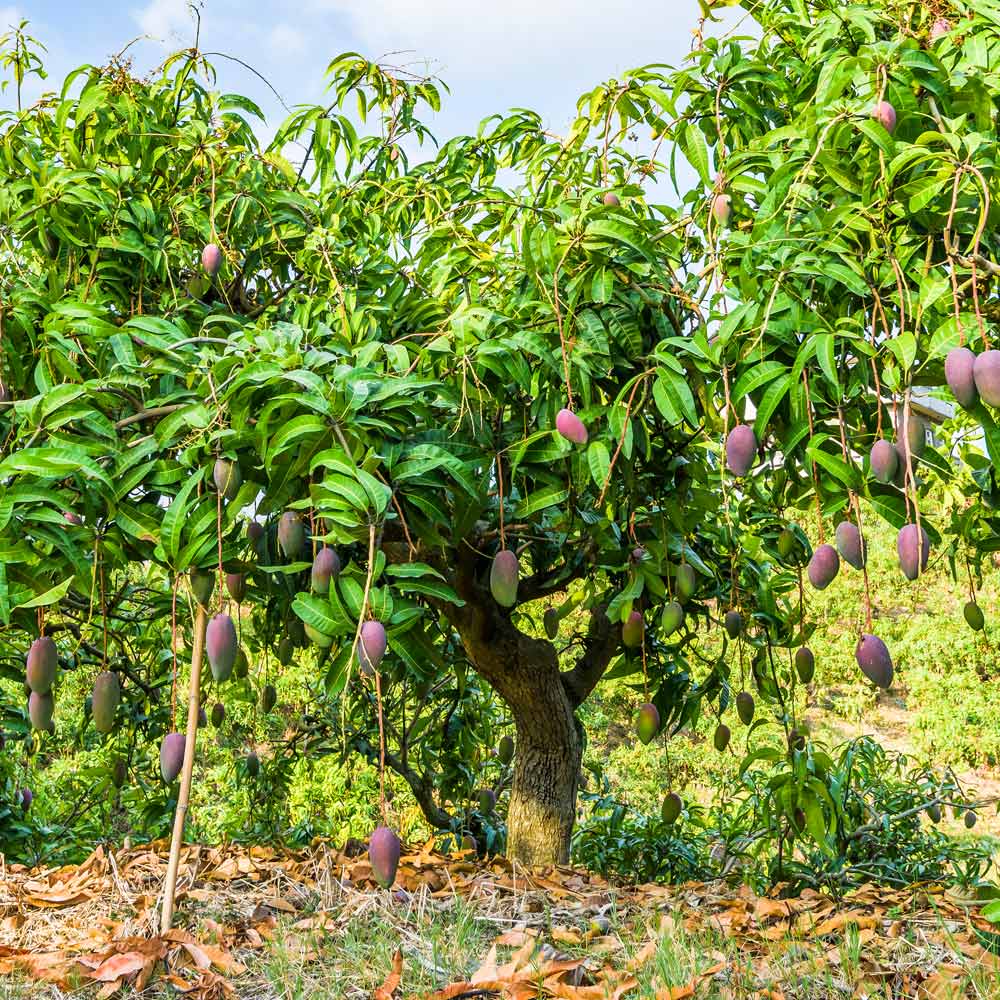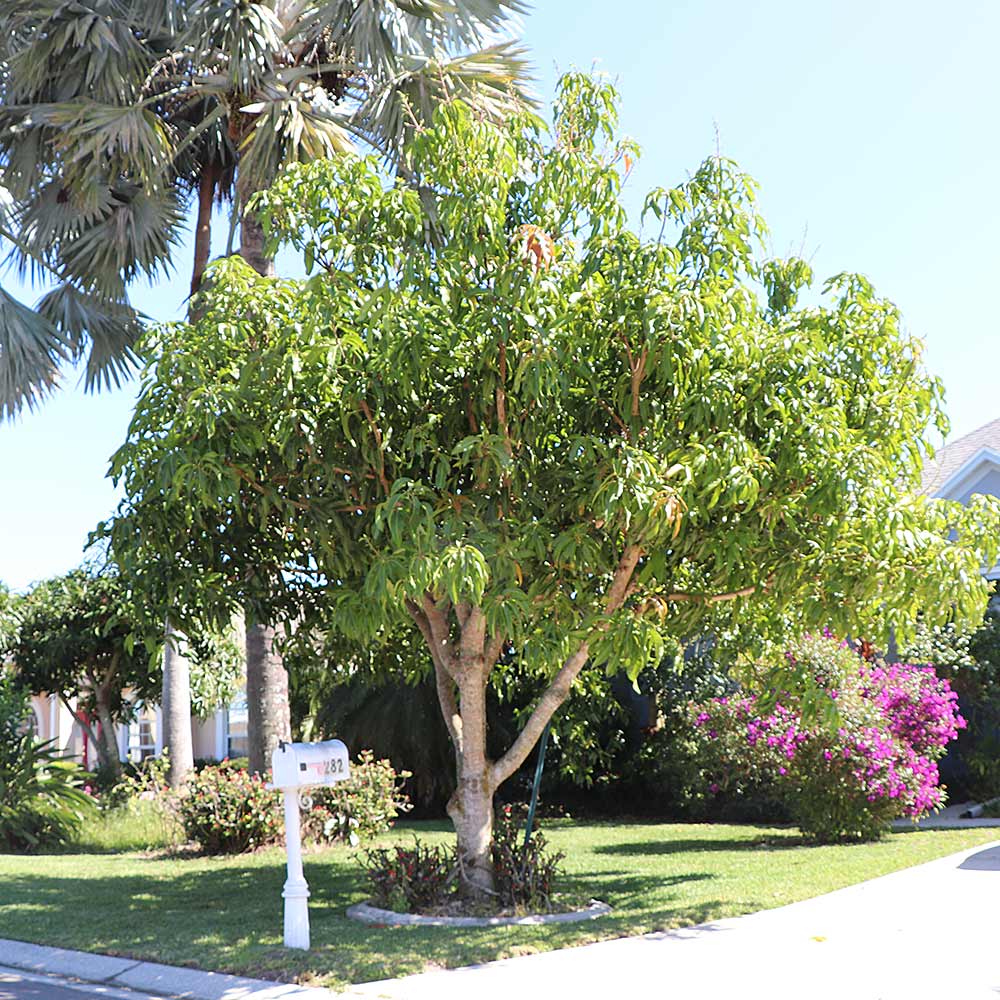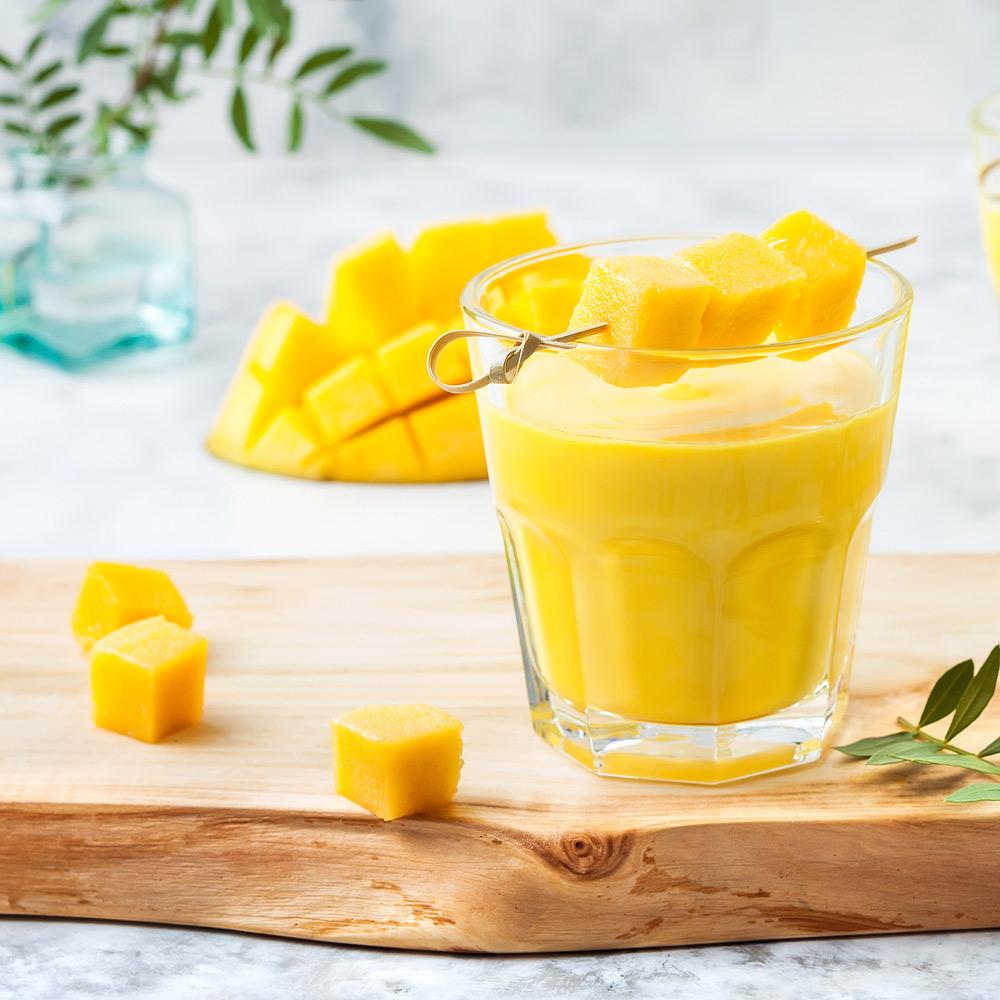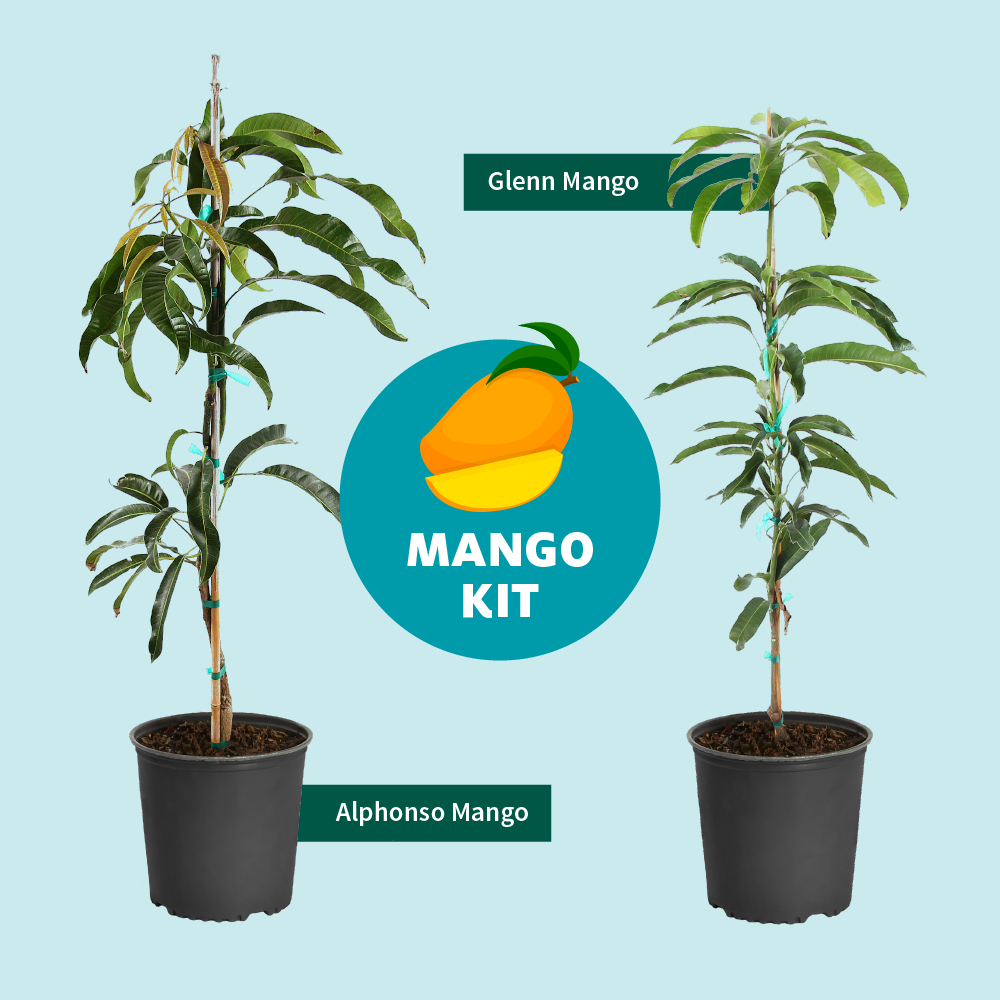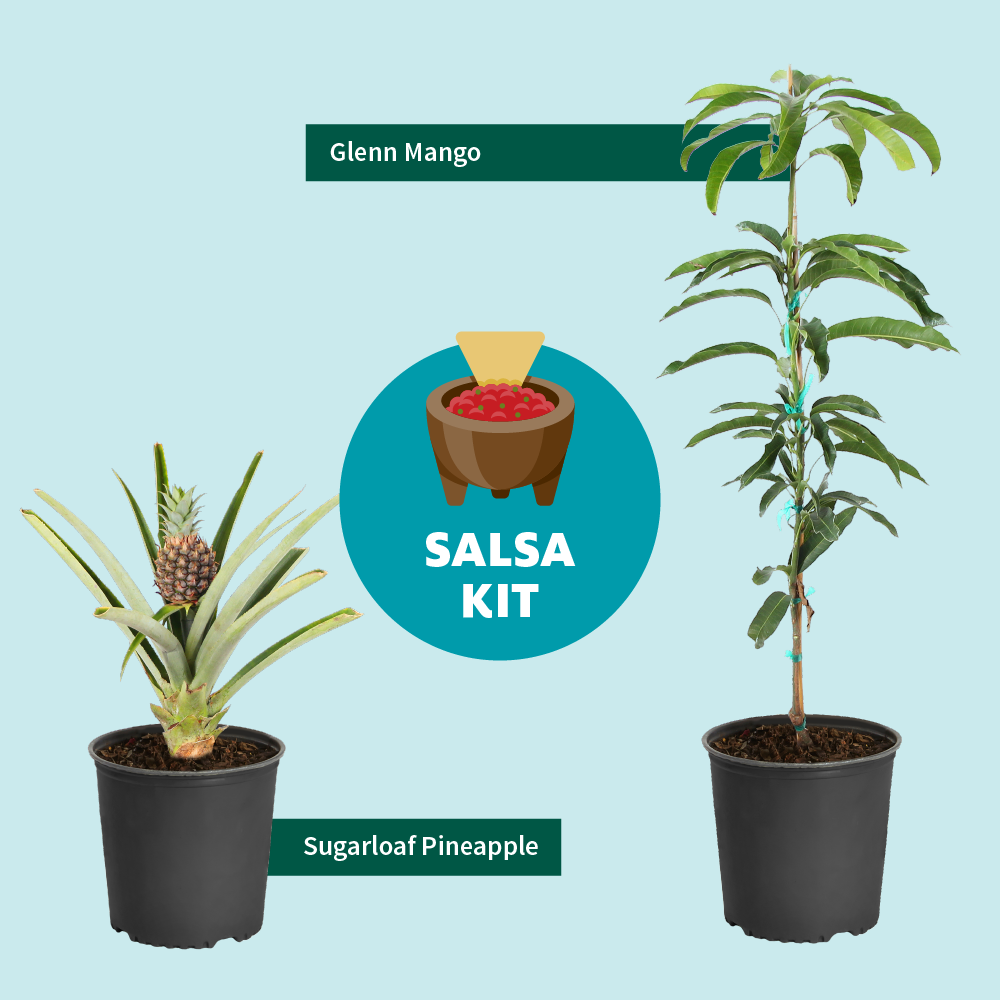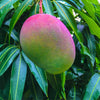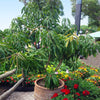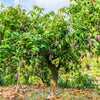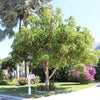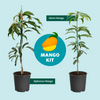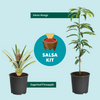* Images shown are of mature plants

Have questions? Talk with our Plant Experts (800) 973-8959
Save 25% on $200+ with code FALL25.
Questions? Call our plant experts: (800) 973-8959
Delicious Mangoes in Any Zone
Gorgeous growth with delectable taste that's second to none - the Glenn Mango is in a league of its own, especially since it's an abundant producer, both in containers and in the ground.
But what sets the Glenn Mango apart from the rest?
For starters, Glenn Mangoes can be grown anywhere in the country, effortlessly. And they can tolerate brief temperature drops down to 30 degrees once they're established. In colder areas, simply bring the tree indoors for the winter. It quickly grows to a manageable size - reaching 20 feet when planted outdoors but only 4 to 8 feet when grown in a container.
Plus, with good looks and great taste, indoor growth is highly desirable. This exotic tree has vibrant green leaves and an aromatic scent that will enhance space - the perfect contrast against its vivid, vibrant orange-red hue. Also, the Glenn Mango is self-pollinating, which means it will produce fruit all by itself. Just place it by a sun-soaked, South-facing window and watch the growth take off.
What we love about the Glenn Mango: Your medium to large mangoes will be ready for harvesting from late June to July. Seed-grown Mango Trees can take 6 to 8 years to produce fruit, but because we put in extra work to hand-graft your tree (adding a year or more to our own growing schedule), it's ready to go and grow. And with a firm texture, Glenn Mangoes are not as fibrous as most mango varieties, making them the perfect fruit for adding to desserts, salads or savory chutneys.
Basically, you can save thousands of dollars and tons of time with the Glenn Mango - order your own today!
Pollination Info
Glenn Mango Tree Pollination
Glenn Mango Trees are self-fertile. You will get fruit with only one plant. However, adding an additional Glenn Mango Tree will drastically increase the size of your crop.
Planting & Care
The Glenn Mango (Mangifera indica 'Glenn') is a fast growing, semi-dwarf tropical tree that produces delicious mangoes without taking up too much space. This full sun loving tropical tree is best suited for USDA growing zones 9-11 but can be successfully container grown for zones 4-11. When grown outside in more tropical areas, the mango can take cold snaps that drop as low as 30 degrees. One of the other advantages of the Glenn is that it is a self-fertile tree which means you can get fruit with just the one but have a more bountiful harvest with two nearby one another.
Location: Direct sunlight and lots of warmth are a mango’s best friend. When choosing a location, whether in a container or in the ground, try to choose a place with the most hours of sunlight possible. If the container will be indoors, place it near a window. When choosing a location in the ground, avoid low areas or areas that tend to flood. Mangoes like to be on higher, drier ground for better drainage.
Note: This product grows best in well-draining soil. When you receive your plant, you may notice small, white beads or rocks in the soil - this medium is added to increase drainage and keep your plant happy and healthy!
Planting Directions (in ground):
1) Once you have chosen the best spot for your tree, dig a hole that’s three times as wide as the pot your tree came in, and just as deep. Take a pitchfork or shovel and loosen the soil around the sides of the hole. Remove any debris, like dirt clumps, grass, or rocks.
2) Carefully remove the tree from its plastic container and gently comb through the root ball to free up the roots.
3) Position your tree in the hole, and make sure that it’s level with the surrounding ground, and that it is standing straight up.
4) Back fill the hole and tamp down with your hands as you go to avoid any air pockets from forming.
5) When you have finished, water the planting site generously and then broadcast mulch around the base to conserve soil moisture and combat any competing weeds that try to grow around the tree. Avoid letting the mulch touch the trunk of the tree or fungus and rot may set in.
*Tip: Mangoes prefer loose sandy soil that is on the acidic side. To achieve this, mix a little sand into the hole along with a bag of acidic planting mix. The acidic planting mix will have lots of potassium to make your mangoes taste more flavorful!
Planting Directions (potted):
1) Select a pot that has multiple drainage holes in the bottom and is 2 sizes bigger than what the mango initially arrived in.
2) Fill in the open pot space around the root system with a quality potting mix that has a light acidic side to it.
3) Tamp down the potting soil as you would if the tree was planted in the ground to prevent any air pockets from forming.
4) Water the mango well so the soil has been evenly moistened and allow the soil to settle.
5) Ensure the tree is in a very sunny location as this tree does need full sun to thrive. 6-8+ hours each day is best for the exposure.
Watering: Mangoes are rarely ever thirsty but for their first two weeks of establishing, they try to water daily to help with establishment. After the first two weeks water as needed when the soil is dry a few inches down. Mangos can be sensitive to overwatering, so feel the soil before watering and adjust accordingly based on your weather.
Fertilizer: DO NOT USE CHEMICAL FERTILIZER! Mangoes are easily burnt by fertilizers high in ammonium nitrate. The best fertilizer is a natural, organic one with mycorrhizal fungi and beneficial bacteria. A little gardening secret that Indians used to do that works wonders on mangoes, bury a fish touching the roots of your plant. The fish contains lots of nutrient crucial to a mango in its first years. Potted mangos will benefit from a balanced fertilizer formula such as a 10-10-10 while actively growing. Cut back on feeding the tree nitrogen in flowering period, instead provide a boost of phosphorus and potassium.
Weed Control: Weeds steal vital nutrients from the plants around them. The best way to keep weeds at bay and help your tree grow is with pine bark. Placing a one-inch thick layer three feet around the base of your tree will stop the weeds. Also another bonus is as the pine bark decomposes, it will raise the acidity of your soil naturally!
Pruning: On a mango tree the fruit forms at the ends of the branches. Because pruning causes the tree to put on more lateral branches, pruning will give you more mangoes. Mangoes are very forgiving so don’t be afraid to prune them, but don’t go crazy and scalp the thing. Your goal when pruning should be to form an open crown so that light and air can penetrate to the middle of the tree. This will reduce the risk of fungus and diseases. The best time of year to prune your mango tree is right after the harvest; but in cooler areas you will be better off pruning just before the mango starts to flower. Some light pruning of the potted mango is good. These trees do not typically require a lot of pruning, just be sure to remove dead, damaged or diseased branches to help control the tree’s shape.
Pollination: Mangoes are excellent self-pollinators and will produce fruit by themselves. If you want to double your yield it is recommended to plant a second mango and encourage bees and other pollinators to come to your trees.
Related Resources
Tropical Plants: How to Transition Indoors
As temperatures drop down into the 50-degree range and below, it’s about that time to move tropical plants indoors for the colder months. By following ...
Read the full article
Video: How to Overwinter Tropical Plants Indoors
Worried about keeping your tropical plants happy and healthy as the temperature drops? We're here to help! Follow along as our friend and plant hobbyist ...
Read the full article
FAQs
How long does it take for a mango tree to bear fruit?
Do you need 2 mango trees to produce fruit?
How big does a mango tree grow?
Shipping Details
Estimated Shipping Time: Most orders ship immediately. As noted on the website, some items are seasonal, and may only ship in spring or fall. Once your order is shipped, you'll receive an email with a tracking number.
| Amount of Order | Shipping Charge |
|---|---|
| Less than $49 | $19.95 |
| $49 + | FREE SHIPPING! |
Product Details
| Mature Height: | 15-20 ft. |
| Mature Width: | 8-10 ft. |
| Sunlight: | Full-Partial |
| Growth Rate: | Fast |
| Harvest Time: | June-July |
| Year to Bear: | Can Fruit the 1st Year! |
| Botanical Name: | Mangifera indica 'Glenn' |
| Does Not Ship To: | AZ |
| Grows Well In Zones: | 4-11 patio / 9-11 outdoors |
| Your Growing Zone: | # |
